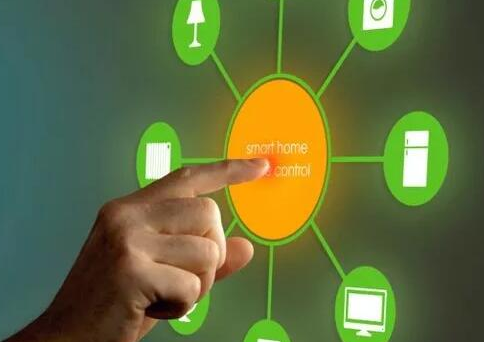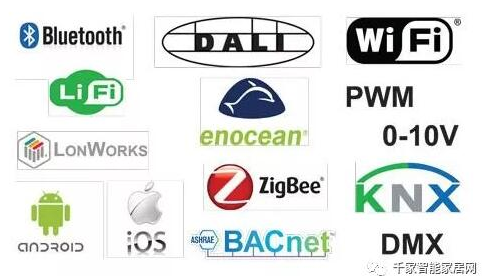Should we wait for a set of global lighting control standards? The main reason for the failure to actively implement lighting control strategies is confusion, confusion about which technology to employ, and confusion about which supplier to invest in, especially for lighting control systems in indoor commercial and office environments. Most lighting OEMs do not have the time, resources or expertise to evaluate the benefits of all lighting control technologies. For residential lighting control (ie smart bulbs), the mainstream agreement is clear, ZigBee Light Link is the winner in this regard, and multiple lighting OEMs support the agreement. However, for indoor commercial and office lighting control, technology choices are still changing and the number is growing. Figure: A lot of lighting control technology options There are three main reasons for a lack of leading global standards: the first reason is that the main lighting control technology and/or the main LED driver dimming signal varies from region to region. For example, 0-10V is the primary LED driver dimming signal in North America, while DALI (Digital Addressable Lighting Interface) and Pulse Width Modulation (PWM) dominate in Europe and Japan, respectively. From the perspective of building automation systems, although BACnet seems to be a dominant global agreement, KNX is very popular in Europe. Therefore, it is difficult for lighting OEMs to rely on a single technology in order to adapt to end customers in various regions. The second reason is that lighting control equipment varies with complexity. On the one hand, some devices simply require an inductive sensor to provide a signal to the LED driver depending on whether someone is in the room, and decide whether to turn it on or off. If there are multiple devices in different rooms throughout the building, and no gateway connects them to a centralized control system, these simple systems will operate independently. On the other hand, there is now a centralized lighting control system that manages, monitors and controls the lighting of buildings, even entire cities, entire countries, or multiple buildings around the world. The types of technologies that are commonly used to make these simple and complex systems tend to be significantly different. Therefore, this is another challenge for OEMs that rely on a single lighting control technology. The third and most influential reason is that lighting OEMs do not specify lighting control technology for any given project. This is the responsibility of the decision maker, architect, building owner or building manager. What should lighting OEMs do when choosing lighting control technology to develop active lighting control strategies? The answer for many lighting OEMs is wait, because standards and complexity are yet to be determined. The choice of lighting control technology is based on five criteria: flexibility, interoperability, simplicity, scalability, and proven technology. Flexibility and interoperability All lighting control technologies fall into one of two major technology categories: patented technology or open technology. Products from specific suppliers using proprietary technology can only be used with other products from the same supplier. Lighting control companies that develop patented technologies have followed this business model because of their technology-driven value proposition or because of their strong market channels (especially for mature companies). Patented technology can be applied to specific lighting control projects with good technical adaptability, or patented technology is directly designated as a lighting control solution. In contrast, open technologies are based on open or public standards, allowing multiple companies to develop products that use the same basic protocol; products from different vendors can interoperate as systems work. As a result, open technology gives lighting OEMs the flexibility to choose between multiple suppliers, mixing and matching solutions based on function, form factor and pricing to meet end-customer lighting control requirements. For example, a given project may require the lighting control system to support BACnet BAS with occupancy and daylighting sensors, where the fixtures must be controlled by DALI signals. If the technology or supplier chosen by the lighting OEM is not flexible enough, the lighting OEM will eventually be forced to use multiple technologies from multiple vendors. This puts pressure on resources, especially the sales and sales representative teams of lighting OEMs who must deliver lighting and control solutions to end customers. Simplicity and scalability Some end customers, such as building owners and building managers, do not want to incorporate a BAS or centralized lighting control system that can be controlled, set up and monitored by a computer or mobile device. Instead, these end customers prefer to limit lighting control solutions to LED driver switches, sensors and controllers (typically 0-10V relays and DALI controllers) without the need for gateways or complex network equipment. In other words, these end customers want to provide a simple, independent lighting control system in every room in each building. Currently, there are two main options for a simple independent lighting control system: the first is from a well-established proprietary lighting control supplier and the other is EnOcean technology. In contrast, currently available ZigBee or 802.15.4 based lighting control systems require the use of gateways or network devices. Assume that, months or years after installing a simple stand-alone lighting control system, the building owner or manager decides to use BAS, or wants to use a PC/smartphone/tablet for centralized lighting control, setup and monitoring. EnOcean technology seamlessly and easily converts from a simple stand-alone system to a scalable network system without the need to change existing lighting control systems. ZigBee-based and 802.15.4-based lighting control systems can be extended to a complete building or even multiple buildings, but gateways or network equipment are always required at the starting point. Building owners and building managers often do not want their buildings to be a testing ground for emerging technologies. Therefore, the lighting control technology that lighting OEMs promote for the project must be a mature technology. As more and more lighting OEMs sell their fixtures in multiple markets, lighting OEMs do not have to understand and promote different technologies based on the location of the project. (Source: LEDinside, compiled: James) The 16-port 1U charger USB2.0 is a charging device that can charge up to 16 USB powered devices at the same time. It is designed to be installed on a rack or cabinet, occupying 1U (unit) of space. The USB2.0 standard provides a maximum power output of 500 mA for each port, which means that the charger can provide up to 8 A of power in total. It is usually used in offices, schools and other places where multiple devices need to be charged at the same time. 16 Ports HUB2.0,16 Ports 1U HUB2.0 Charger,16-Ports 1U HUB2.0 Charger shenzhen ns-idae technology co.,ltd , https://www.szbestchargers.com
